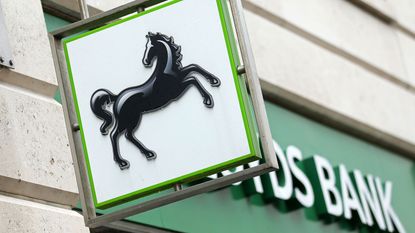Are value stocks finally back for good?
The Covid-19 vaccine might give value investors the lift they’ve been waiting for, says John Stepek. And the UK is a good hunting ground.


That was quick. In last week’s issue, Jim Mellon told Merryn that investors should buy Lloyds Bank (watch the interview at moneyweek.com/videos). Between that issue coming out on Friday, and Wednesday lunchtime, the share price had risen by 20%. Much as we’d like to claim the credit, the main driver was of course the surging hopes for a vaccine (see page 6). Lloyds was just one of many “value” stocks (companies that look cheap on their “fundamentals”, as measured by various financial ratios) to have rallied sharply on the news that we might soon be able to put the misery of intermittent lockdowns behind us.
Value stocks have lagged growth stocks since at least March 2009 (when they had a short-lived blip of outperformance) and we’ve heard many a call that “this must be the turn”. So is this just another false alarm? Or did poor Ted Aronson, who closed his $10bn value-focused hedge fund AJO Partners only last month, actually call the bottom of this cycle when he threw in the towel?
The case for value
Why has growth trounced value so badly? One factor is that in a low interest-rate, low inflation, weak-growth world, fast-growing companies which promise lots of future profits – even if they make very little today – are at a premium. If inflation is low, then investors are happy to wait for their money. Given the choice between a reliable but barely-growing income stream today, or the promise of a pot of gold at the end of a rainbow sometime in the future, investors are happy to wait for the pot of gold. So growth stocks (which could be described as “long duration” assets – see below) do well. But if inflation picks up, it becomes riskier to wait, and cash-generative value looks more appealing.
Subscribe to MoneyWeek
Subscribe to MoneyWeek today and get your first six magazine issues absolutely FREE

Sign up to Money Morning
Don't miss the latest investment and personal finances news, market analysis, plus money-saving tips with our free twice-daily newsletter
Don't miss the latest investment and personal finances news, market analysis, plus money-saving tips with our free twice-daily newsletter
So if we’re seeing a turnaround now, it’s because the vaccine news means markets expect economies to open up faster, which means better economic growth, and potentially higher interest rates and inflation to go along with it. Does that seem a reasonable bet? We’d argue that it does. If anything can generate inflation, then huge pent-up demand combined with free-spending governments is surely it. So what should you invest in? The UK is a good option for value. Despite the recent surge in airlines, banks and oil stocks, there’s plenty of room for more. We looked closely at the value-focused Law Debenture (LSE: LWDB) investment trust in last week’s issue and we’re very glad we kept it in our portfolio. If you prefer pure passive, a plain old FTSE 100 tracker will give plenty of exposure to value. And if we’re wrong? Hang on to your holding of Scottish Mortgage (LSE: SMT), just in case – but think about rebalancing.
I wish I knew what duration was, but I’m too embarrassed to ask
“Duration” is a measure of risk that usually relates to bonds. It describes how sensitive a given bond is to movements in interest rates. Think of the relationship between bond prices and interest rates as being like a seesaw: when one side (interest rates) goes up, the other (in this case, bond prices) goes down.
Duration (you can find the measure in the fact sheet of most bond funds) tells you the expected percentage change in a bond’s price in response to a one percentage point (100 basis points) change in interest rates. The higher the duration, the higher the bond’s “interest-rate risk” – that is, the larger the change in price for any given change in rates. This is also known as “modified” duration.
Duration can also refer to the weighted average length of time (in years) it will take to recoup the price paid for a bond in the form of income from its coupons (interest payments) and the return of the original capital. So if a bond has a duration of ten years, that means you have to hold it for ten years to recoup the original purchase price (this is also known as “Macaulay duration”). In practice, both measures of duration return very similar values. So in the above example, the duration value of ten also indicates that a single percentage point rise in interest rates would cause the bond price to fall by 10%.
As a rough guide, the duration of a bond increases along with its maturity – so the longer a bond has to go until it repays its face value, the longer its duration. Also, the lower the yield on the bond, the higher its duration – the longer it takes for you to get paid back. All else being equal, a high-duration bond is riskier (more volatile) than a low-duration bond.
When applied to other assets such as equities (as above), a “long duration” asset refers to the fact that the payback period is lengthy (it takes a while to earn your original investment back) and thus the asset is sensitive to movements in interest rates.
John is the executive editor of MoneyWeek and writes our daily investment email, Money Morning. John graduated from Strathclyde University with a degree in psychology in 1996 and has always been fascinated by the gap between the way the market works in theory and the way it works in practice, and by how our deep-rooted instincts work against our best interests as investors.
He started out in journalism by writing articles about the specific business challenges facing family firms. In 2003, he took a job on the finance desk of Teletext, where he spent two years covering the markets and breaking financial news. John joined MoneyWeek in 2005.
His work has been published in Families in Business, Shares magazine, Spear's Magazine, The Sunday Times, and The Spectator among others. He has also appeared as an expert commentator on BBC Radio 4's Today programme, BBC Radio Scotland, Newsnight, Daily Politics and Bloomberg. His first book, on contrarian investing, The Sceptical Investor, was released in March 2019. You can follow John on Twitter at @john_stepek.
-
 Pension vs property: which option provides the best income for your retirement?
Pension vs property: which option provides the best income for your retirement?News With the cost of a comfortable retirement on the rise, future retirees need to weigh up which strategy offers the best returns. But is a pension a better bet than property?
By Henry Sandercock Published
-
 The industry at the heart of global technology
The industry at the heart of global technologyThe semiconductor industry powers key trends such as artificial intelligence, says Rupert Hargreaves
By Rupert Hargreaves Published
-
 The industry at the heart of global technology
The industry at the heart of global technologyThe semiconductor industry powers key trends such as artificial intelligence, says Rupert Hargreaves
By Rupert Hargreaves Published
-
 Three emerging Asian markets to invest in
Three emerging Asian markets to invest inProfessional investor Chetan Sehgal of Templeton Emerging Markets Investment Trust tells us where he’d put his money
By Chetan Sehgal Published
-
 What to consider before investing in small-cap indexes
What to consider before investing in small-cap indexesSmall-cap index trackers show why your choice of benchmark can make a large difference to long-term returns
By Cris Sholto Heaton Published
-
 Why space investments are the way to go for investors
Why space investments are the way to go for investorsSpace investments will change our world beyond recognition, UK investors should take note
By Merryn Somerset Webb Published
-
 Time to tap into Africa’s mobile money boom
Time to tap into Africa’s mobile money boomFavourable demographics have put Africa on the path to growth when it comes to mobile money and digital banking
By Rupert Hargreaves Published
-
 M&S is back in fashion: but how long can this success last?
M&S is back in fashion: but how long can this success last?M&S has exceeded expectations in the past few years, but can it keep up the momentum?
By Rupert Hargreaves Published
-
 The end of China’s boom
The end of China’s boomLike the US, China too got fat on fake money. Now, China's doom is not far away.
By Bill Bonner Published
-
 Magic mushrooms — an investment boom or doom?
Magic mushrooms — an investment boom or doom?Investing in these promising medical developments might see you embark on the trip of a lifetime.
By Bruce Packard Published